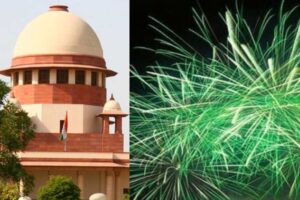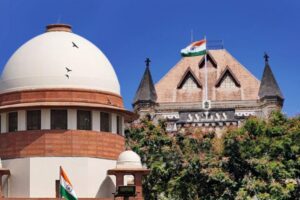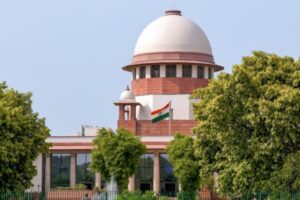
The Hindu side has filed an application in the Supreme Court, seeking the unsealing of the ‘wazukhana’ area within the Gyanvapi complex, following the Archaeological Survey of India’s (ASI) findings during the mosque’s survey. The sealing of the ‘Wazukhana’ occurred in 2022 following a Supreme Court directive.
Advocate Vishnu Shankar Jain, representing the Hindu side, filed the plea, urging the Supreme Court to permit the ASI to conduct a comprehensive survey in the ‘wazukhana’ area without causing harm to the ‘Shivling.’ Jain emphasized that the ASI should be granted permission to conduct a thorough study, stating, “I have filed an application in the Supreme Court asking to vacate the stay order given on 19 May 2023. ASI should be allowed to conduct a study and feature study of the ‘Wazukhana’ area. Only, after the study it will be known if it is a fountain or a Shivling…”
The survey of the Gyanvapi mosque premises commenced after the Allahabad High Court dismissed a petition from Muslim litigants seeking a stay on the Varanasi court’s order for a scientific survey by the ASI. Beginning on August 4, the ASI used ground-penetrating radar and other scientific instruments to explore the Gyanvapi mosque premises.
During the survey, the ASI examined the inner and outer walls, the cellar, and various parts of the premises, excluding the ‘wazukhana’ where Muslims perform ablution before prayers. Vishnu Shankar Jain, on January 27, referred to the ASI report, claiming evidence suggesting that the Gyanvapi mosque was constructed after the demolition of a Hindu temple in the 17th century.
Jain asserted that the ASI’s extensive report, spanning 800 pages, mentioned the discovery of ancient scriptures in Kannada, Devanagari, and Telugu languages within the mosque premises. These scriptures pertained to Rudra, Janardan, and Vishweshwar, and Jain alleged that the pillars of the demolished temple were repurposed in building the mosque.
The ASI’s report on the Gyanvapi mosque complex disclosed that a pre-existing structure seemed to have been destroyed in the 17th century, with “part of it modified and reused.” The report indicated the presence of a large Hindu temple before the construction of the existing structure, with the “western wall of the existing structure” identified as the remaining part of the pre-existing Hindu temple.
Quoting an Arabic-Persian inscription inside a room, the ASI stated that the mosque was constructed during the 20th regnal year of Aurangzeb (1676-77 CE). Consequently, the ASI concluded that the pre-existing structure was likely demolished in the 17th century during Aurangzeb’s reign, with a portion repurposed in the current structure based on scientific studies and surveys.




